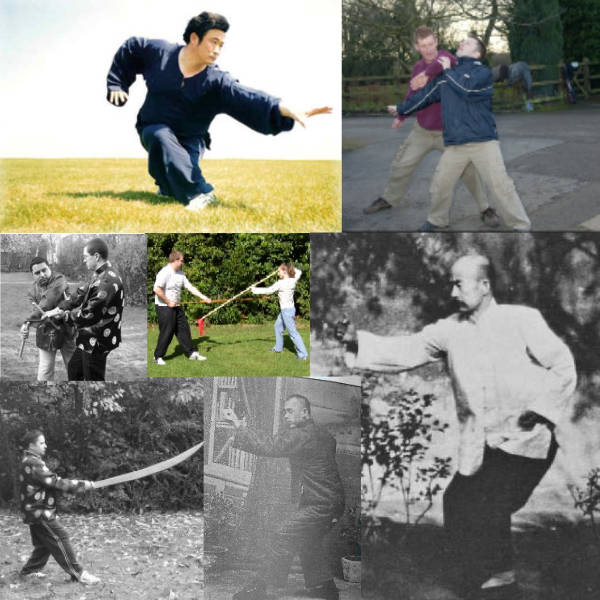Xing Yi is an old battlefield martial art from northern China. It is said to be descended from the Sung Dynasty hero Marshal Yue Fei. Xing Yi is characterised by the application of a broad range of subtle fighting methods based upon the Five Elements of Chinese philosophy as well as twelve different animal Xing (characters or strategies). The art is noted for its unusual footwork, which is different from that used in virtually all other martial arts.

As might be expected of a battlefield style, Xing Yi has extensive weapons methods in addition to barehand practice. These include spear, straight sword, broadsword, staff, halberd and others. We practice the Hebei style of Xing Yi, passed down from Master Guo Yun Shen, which is characterised by the use of the piercing "dark jin" combative energy. Dark jin originally derived from the use of the spear, but is now applied to all Xing Yi weapons as well as bare-hand practice.
Xing Yi is deceptively simple in outward appearance as most of the action takes place internally within the body: direct and powerful attacks are simultaneously combined with subtle defence. Xing Yi is widely respected for its minimal and effective approach to combat. Having been developed by soldiers (rather than monks), the methods and atmosphere of Xing Yi practice are markedly different from other Chinese arts like Tai Chi or Shaolin styles.
Xing Yi (sometimes written Xing Yi), is attributed to Sung Dynasty General Yueh Fei (1103-1141). If true this makes Xing Yi one of the oldest of all existing martial arts. Yueh Fei is verifiably a historical figure and at the very least Xing Yi follows his stalwart battlefield philosophy. An early historically verifiable teacher was Ji Long Feng (mid 1600s AD). For centuries Xing Yi has been the martial art of choice of soldiers and bodyguards in China, and is undeniably effective. The true origin of Xing Yi is nature, as all of its fundamental methods derive from observations of animals such as eagles, bears and tigers fighting, hunting and playing. Each animal has a Hsing, or "shape", which is the essence or factors which adapt it well to its way of life. Altogether there are eleven different real animals: bear-eagle, snake, tiger, chicken, horse, swallow, crocodile, goshawk, flycatcher, monkey and turtle, plus the dragon which represents the Hsing of human beings at their most noble (the Dragon is the symbol of Yueh Fei).